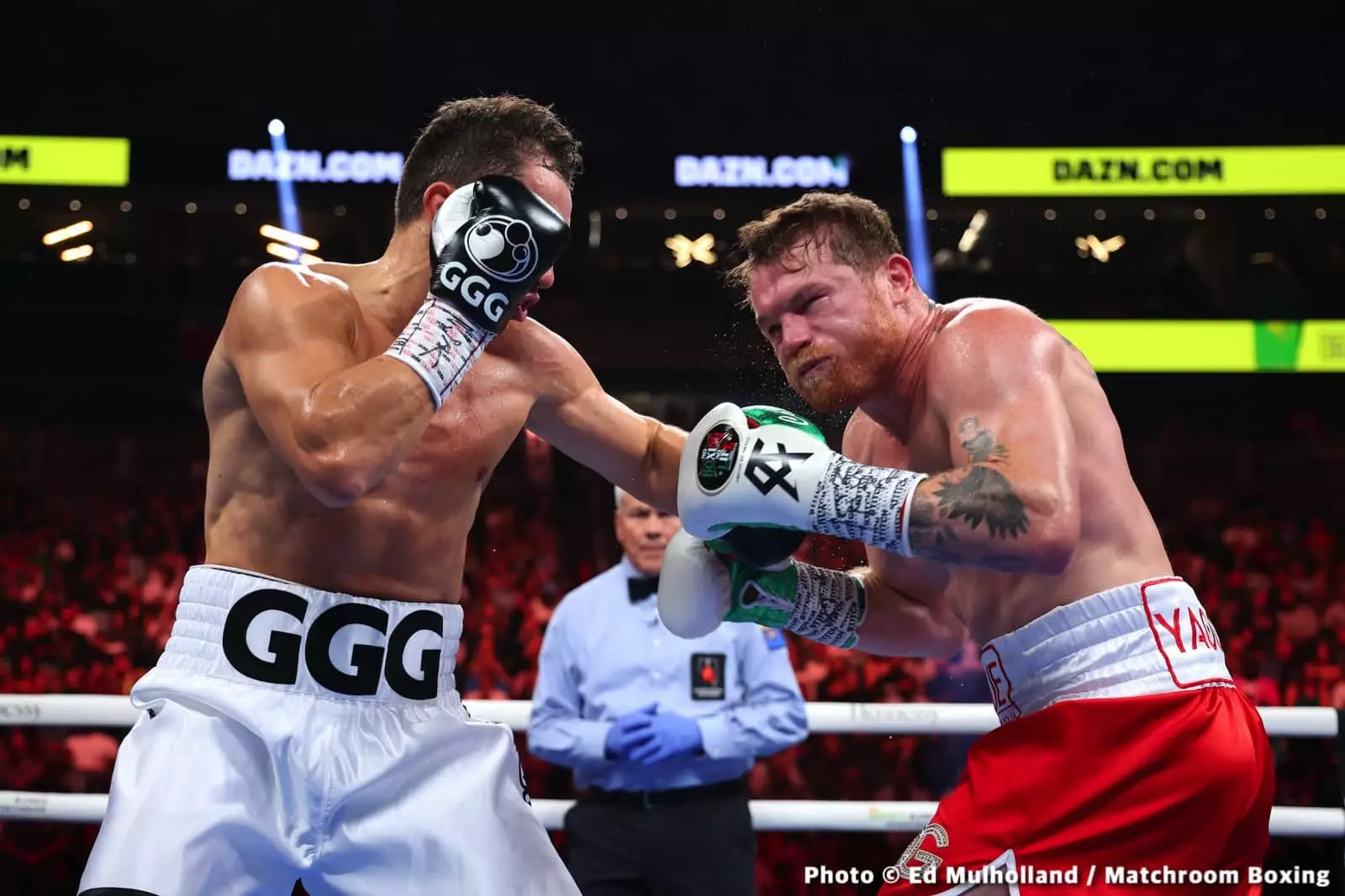When analyzing the upcoming showdown between Terence Crawford and Canelo Alvarez, one critical aspect often overlooked is the raw power that can influence the fight’s outcome. Unlike Golovkin, who was a natural middleweight with formidable strength and knockout prowess, Crawford’s power is vastly different. Gennadiy Golovkin’s dominance wasn’t solely based on technique; it was underpinned by a devastating punch that could keep opponents at bay and turn the tides of battle in a flash. Crawford, on the other hand, relies heavily on his agility, technical ability, and volume punching, but he lacks the cauldron of brute strength that defines GGG’s fighting style.
This distinction is crucial because it impacts Crawford’s capacity to absorb punishment and stay in a fight plan that involves holding his ground. When fighters like Golovkin impose their power, opponents are naturally deterred from engaging recklessly. Crawford’s current physical state and power development do not approach Golovkin’s level, especially after jumping from 154 pounds to 168 without fully tailoring his body to this new weight class. The absence of genuine punch power at this size leaves Crawford vulnerable to Canelo’s most dangerous weapons—his big, clean shots that can slow a fighter down and dictate the tempo.
The Importance of Body Strength and Transition Timing
One of the critical flaws pointed out by trainers like Abel Sanchez is Crawford’s failure to adequately strengthen his body to fight effectively at higher weights. Moving divisions does not merely require adding muscle — it demands a deliberate, sustained effort to develop core strength and punching power. Crawford’s recent performance against Israil Madrimov at 154 pounds revealed that his punching power is not significant enough to control opponents at that level; he relied on volume punchings and endurance to secure victory.
This inadequacy becomes more pronounced when facing someone like Canelo, who is known for his punishing body shots and ability to turn fights into slugfests if given the chance. Unlike Golovkin, who could physically impose himself on Canelo by standing firm and unleashing powerful punches—forcing Canelo to respect his range and strength—Crawford’s current physical and power profile is insufficient for such a strategy. His inability to generate Golovkin-like power at 168 pounds raises doubts about whether he can withstand Canelo’s elite punching arsenal or effectively neutralize it.
Engagement and Risk: A Double-Edged Sword
Another critical factor in Crawford’s potential shortcomings against Canelo is his style of fighting. Crawford’s instinct to engage and put on a display of action might backfire terribly. While fans love exciting fights, this approach plays directly into Canelo’s hands—allowing him to land decisive counters and take advantage of Crawford’s tendencies to commit heavily. A more cautious, disciplined approach would serve Crawford better, but such tactics require power and resilience, qualities Crawford currently struggles to demonstrate consistently at this weight and level.
Furthermore, Crawford’s absence of time to properly acclimate to 168 pounds and develop the necessary body strength is troubling. The rushed progression underscores a fundamental issue: he is gambling on raw talent and volume rather than quality power and physical robustness. The truth is, without that Gennadiy Golovkin-level strength, Crawford’s chances of holding Canelo off or winning a decision are slim.
What sets Golovkin apart is not just his technique but his capacity to physically dominate fights, posing a constant threat that Canelo cannot ignore. Crawford lacks this to the same degree, and the gap in physicality and power will likely prove decisive. Canelo, with his full weight and experience at 168, is more prepared physically and mentally to capitalize on Crawford’s vulnerabilities.
In Defense of Power and Patience
Ultimately, it’s clear that Crawford’s path to victory hinges on more than just skill—it depends on the ability to physically impose himself. Simply put, boxing is a sport where strength and durability often decide battles just as much as technique. Without the natural power and the necessary body development, Crawford risks being overpowered, outpaced, and ultimately outclassed by a well-prepared Canelo.
The challenge for Crawford isn’t only Canelo’s boxing ability; it is about how effectively he can adapt physically for a fight that demands more than speed and skill. Until he demonstrates a fighter capable of absorbing and delivering power at this level, predictions favor Canelo—who’s proven time and again that strength and resilience can turn the tide of even the most evenly matched encounters. Whether Crawford can surprise us remains uncertain, but from a critical standpoint, he faces an uphill climb that is rooted far deeper than just technical prowess: it’s about raw power, physical development, and strategic patience.

